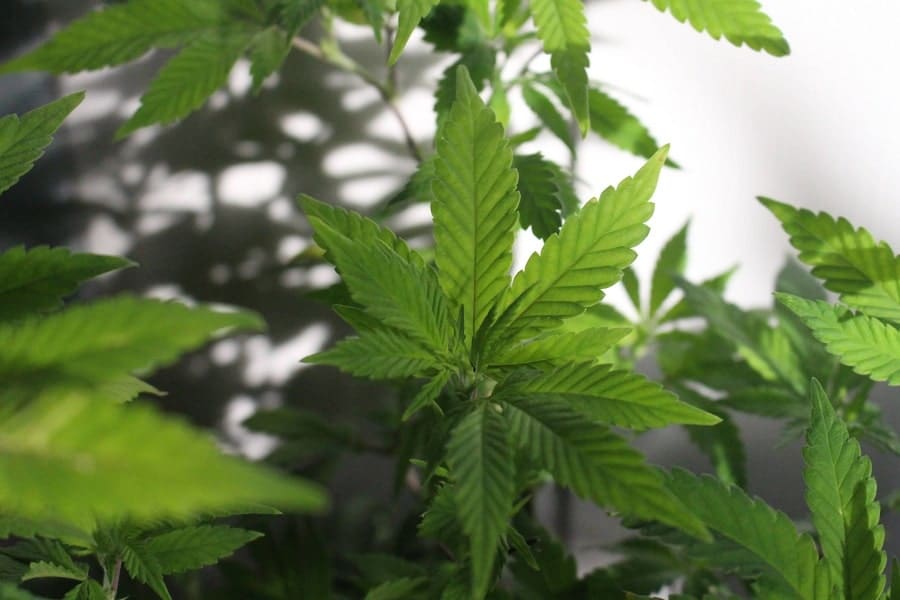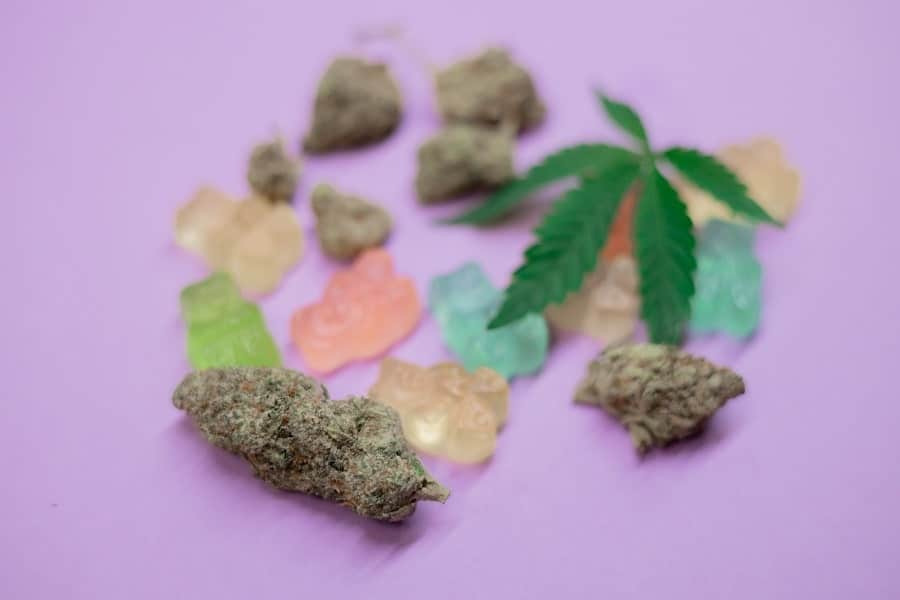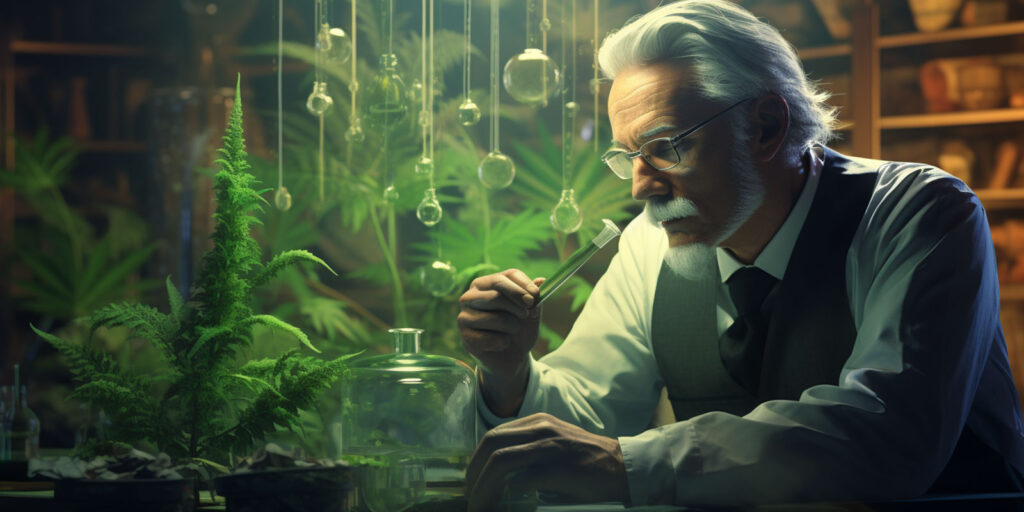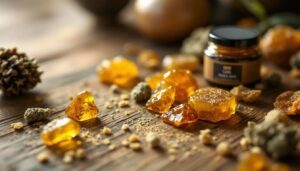The world of cannabis is evolving rapidly, and with it, our understanding of the many compounds it contains. Among them, the THCP is attracting more and more interest due to its unique characteristics and potential.
Discovered in the cannabis plant at the end of the 2010s, it fascinates with its power since it is believed to be up to 33 times more potent than THC ! But what exactly are its effects, which derivatives exist on the market and, even more importantly, is it possible to consume without risk ? Weedy.fr takes stock of the situation.
Sommaire
ToggleTHCP: what is it?

THCP, or Δ9-tetrahydrocannabiphorol, is a cannabinoid that has entered the cannabis scene relatively recently. Unlike the most well-known cannabinoids, such as CBD and the THC, it was not discovered and isolated in the 1960s but in 2019.
At the time, a team of Italian researchers was working on cannabis and its cannabinoids. However, they do not necessarily expect to discover new ones. During their study , they isolated two new molecules: THCP and CBDP (cannabidiphorol). However, it is THCP that attracts the most attention. It indeed shares a striking structural similarity with THC, the main psychotropic compound cannabis. However, what sets THCP apart is its potential ability to bind with even greater affinity to cannabinoid receptors in the body. It is therefore more powerful than THC, and this is not its only particularity.
Is THCP legal?
Yes. At the time of writing these lines, buying THCP in France is legal, under the same conditions as other cannabis derivatives. A product containing THCP must therefore have been extracted from a plant belonging to a authorized variety and whose THC level does not exceed 0.3%. Only THC, HHC and some of their derivatives are currently prohibited because they are considered narcotics.
THCP Vs. CBDP, what are the differences?
Like THCP, CBDP is naturally produced by cannabis. Both result, moreover, from the transformation of CBG (cannabigerol), like many other cannabinoids. As their names suggest, THCP is a derivative of THC and CBDP is a derivative of CBD. However, both THCP and CBDP have a longer linker chain, or side chain. Without going into a chemistry class, this means that their effects and potency are different since they interact differently with the endocannabinoid system.
Interaction with the endocannabinoid system

THE endocannabinoid system (SEC) is a set of receptors (named CB1 and CB2) distributed throughout the human body and, more generally, that of mammals. In particular, he has a influence on the nervous system and the immune system. One of its particularities is to interact with cannabinoids, whether they are produced naturally by our body (endocannabinoids) or that they come from plants (the phytocannabinoids, like those present in cannabis).
THCP, due to its particular structure, could have a more powerful influence on these receptors, which could, in turn, have impact on various physiological processes such as the pain, L’appetite and themood.
Potential effects of THCP
Although research on THCP is still in its early stages, preliminary studies suggest that it may have varying effects on our bodies and minds. It could thus be in particular:
- analgesic
- anti-inflammatory (and therefore painkiller)
- Antiemetic (it would reduce nausea and vomiting)
- Anxiolytic
- and possibly other effects similar to those observed with other cannabinoids
Its proximity to THC means that it is also psychoactive. In other words: it gets you high. On the other hand, it seems act faster and more powerfully.
THCP products

As awareness of THCP grows, so does the number of products available on the market. As it is a natural cannabinoid, we can buy flowers, pollens and resins rich in THCP. We also find THCP isolates in all kinds of derivatives, from concentrates to vape products including edible derivatives (especially sweets). It nevertheless remains important to find out about the quality of the product and the evolution of regulations in order to avoid any potential risk linked to its consumption.
Side effects and precautions for use

As with any active compound, THCP may have side effects. Initial studies indicate that effects such as mood changes, of the cognitive alterations and gastrointestinal disorders could occur. It is crucial to note that these findings are preliminary and that research must continue to obtain a more complete picture of the effects of THCP, both positive and negative.
Potential side effects
- Pasty mouth
- Fatigue
- Drowsiness
- Red eyes
- Increased appetite
- Gastrointestinal disorder
- Tachycardia
- Mood changes
- Cognitive alterations (confusion, mild paranoia)
In short, THCP stands out as an exciting and promising cannabinoid, which will certainly influence much future research on cannabis. Its action on the endocannabinoid system gives it a interesting potential, but also questions its potential long-term dangers or on certain categories of people. Like CBD and THC, we can indeed assume that there is a risk ofdrug interaction with certain treatments. The fact that it is psychoactive could also lead to it being banned or in any case regulated in the near future.
For now, CBD products remain the safest and healthiest way to benefit from the effects of cannabis. It is in fact perfectly legal, does not get you high and has already been the subject of numerous research. If you want to take advantage of them, go to the store to (re)discover the flowers, resins, oils, infusions, wellness products or CBD vape products.



